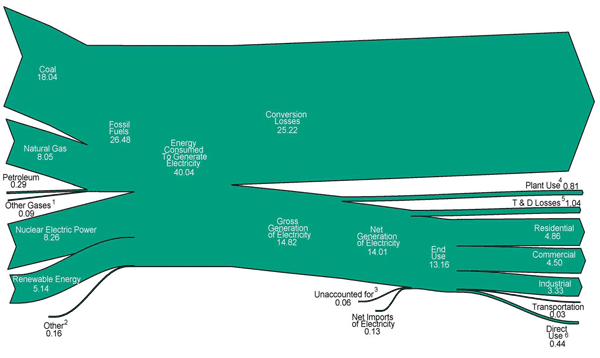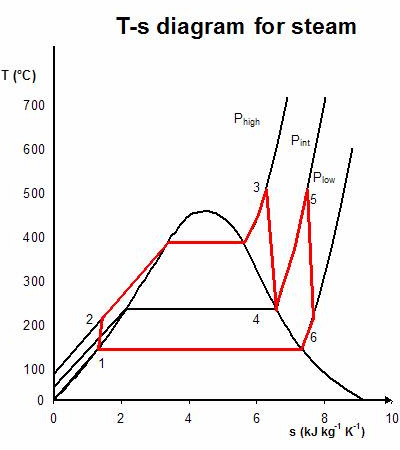Skip to comments.
Report: Transformation in U.S. power supply breeds new challenges
Fuel Fix ^
| January 31, 2013
| Jennifer A. Dlouhy
Posted on 01/31/2013 11:03:54 AM PST by thackney
A jump in natural gas usage combined with big gains in energy efficiency have helped the United States make strides in cutting emissions over the past five years, according to a report released Thursday.
The “Sustainable Energy in America” factbook documents a 6.4 percent slide in total energy use between 2007 and 2012. During the same time frame, the amount of electricity generated both by natural gas and renewable sources climbed, and coal-fired power generation declined, helping to trim carbon dioxide emissions produced when fossil fuels are burned.
“Significant changes are occurring in the US energy sector that are boosting investment and accelerating deployment of a range of commercially available clean technologies,” said Lisa Jacobson, president of Business Council for Sustainable Energy, which developed the report with Bloomberg New Energy Finance.
Perhaps the biggest change documented in the report is America’s transition toward lower- and zero-carbon power sources, especially natural gas, which provided nearly a third of the nation’s electricity in 2012. That’s a big jump from five years earlier, in 2007, when natural gas was used to generate just about a fifth of electricity in the United States.
Renewable energy generation — including not just wind and solar, but also geothermal and hydropower — has climbed from 8.3 percent to 12.1 during the same five-year span, adding more than 17 gigawatts.
Total U.S. installed capacity of natural gas and renewables is now at 629 gigawatts (442 of that coming from natural gas), representing about 58 percent of the total power generating mix.
The evolution in the United States’ electricity supply will necessitate big changes down the road, as regulators work to ensure reliability and balance intermittent wind and solar supplies. According to the report:
Ensuring ongoing reliability will become an even tougher challenge for electricity market operators and regulators, given the diminished role for coal and the increased presence of variable resources (ie, intermittent renewables). Yet other changes afoot – including reduced electricity demand through energy efficiency; the introduction of smart grid technologies for improved grid management; and the growing role for dispatchable resources such as natural gas plants, hydropower, and demand response – can help the electricity industry meet this challenge.
Of course, emerging power sources don’t always exist in harmony, even though natural gas — which can more easily be used to generate power with a moment’s notice — is generally cast as a strong partner for intermittent renewables. The relatively low price of natural gas has made it tough for wind power to compete economically (though that industry has gotten a boost through a federal production tax credit, just extended for another year by Congress).
TOPICS: News/Current Events
KEYWORDS: electricity; energy; naturalgas
1
posted on
01/31/2013 11:04:03 AM PST
by
thackney
US ELECTRICITY FLOW, 2011

click to enlarge
Footnotes:
1 Blast furnace gas, propane gas, and other manufactured and waste gases derived from fossil fuels.
2 Batteries, chemicals, hydrogen, pitch, purchased steam, sulfur, miscellaneous technologies, and non-renewable waste (municipal solid waste from non-biogenic sources, and tire-derived fuels).
3 Data collection frame differences and nonsampling error. Derived for the diagram by subtracting the “T & D Losses” estimate from “T & D Losses and Unaccounted for” derived from Table 8.1.
4 Electric energy used in the operation of power plants.
5 Transmission and distribution losses (electricity losses that occur between the point of generation and delivery to the customer) are estimated as 7 percent of gross generation.
6 Use of electricity that is 1) self-generated, 2) produced by either the same entity that consumes the power or an affiliate, and 3) used in direct support of a service or industrial process located within the same facility or group of facilities that house the generating equipment. Direct use is exclusive of station use.
2
posted on
01/31/2013 11:11:41 AM PST
by
thackney
(life is fragile, handle with prayer)
To: thackney
3
posted on
01/31/2013 11:22:29 AM PST
by
TSgt
(The right of the people to keep and bear Arms, shall not be infringed.)
To: thackney
Soo... the fact that natural gas is cheap, plentiful, efficient and clean is a problem?!
Sheesh!
I consider this good news and a slap in the face of windmill fans to boot.
4
posted on
01/31/2013 11:30:22 AM PST
by
BitWielder1
(Corporate Profits are better than Government Waste)
To: thackney
So long as the ChiComs continue to set new coal burning records each month, does any of this really help?
To: thackney
The conversion losses are astronomical. There’s a lot of money to be made fixing that.
6
posted on
02/02/2013 4:37:59 PM PST
by
1010RD
(First, Do No Harm)
To: 1010RD
Coal, Natural Gas, Nuclear...
They are all heat engines and subject to a Rankine cycle with those losses.

While there are ways to reduce the losses.
Rankine cycle with superheat

And further reduce those losses
Rankine cycle with reheat

You are still playing the game with the law of thermodynamics. You always lose significant energy.
7
posted on
02/02/2013 7:10:02 PM PST
by
thackney
(life is fragile, handle with prayer)
To: thackney
Wow, you are a real resource. Thanks. I didn’t realize how ignorant I am about energy. I reall appreciate all your insights and postings.
I had no idea the Rakine cycle existed nor that 90% of world energy generation depends on it. I’ll be doing a lot of reading.
Enjoy the Lord’s Day.
8
posted on
02/03/2013 5:06:48 AM PST
by
1010RD
(First, Do No Harm)
Disclaimer:
Opinions posted on Free Republic are those of the individual
posters and do not necessarily represent the opinion of Free Republic or its
management. All materials posted herein are protected by copyright law and the
exemption for fair use of copyrighted works.
FreeRepublic.com is powered by software copyright 2000-2008 John Robinson



